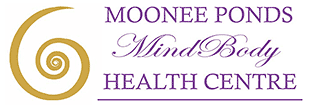Kinesiology
 Kinesiology uncovers and releases different kinds of stress to promote self-healing. In a state of balance or homeostasis, we are healthy and the body self regulates. Stress may be physical (structural, biochemical or electromagnetic), emotional, mental or spiritual in nature. Biofeedback received from gentle muscle monitoring helps locate the stress and factors preventing its release.
Kinesiology uncovers and releases different kinds of stress to promote self-healing. In a state of balance or homeostasis, we are healthy and the body self regulates. Stress may be physical (structural, biochemical or electromagnetic), emotional, mental or spiritual in nature. Biofeedback received from gentle muscle monitoring helps locate the stress and factors preventing its release.
Practitioners use muscle monitoring originating from chiropractic techniques with Eastern approaches to balancing chi or life force energy in the body. This, combined with an energetic set-up called formatting, allows the kinesiologist to address key issues underlying symptoms or anxieties. Biofeedback from the mindbody also identifies the most suitable correction.
Energy balancing – brain structures, as well as the body’s subtle energy fields. Corrections include chakra balancing. Kinesiology takes into account the interrelationship of muscles, nerves, meridians, organs and brain structures. Corrections may include acupressure, flower essences, holding or massage of specific reflex points, creative visualisation, dietary advice, energetic cranio-sacral and TMJ balancing or corrections using sound, colour or light.
Kinesiology can help a client move away from worry and over-thinking, sadness and depression, fear and anxiety, loss of direction in life, confusion and indecision, relationship blocks, fight and flight reactions, or any other kind of mental and emotional stress. This therapy can also help improve memory, learning and the ability to focus under stress.
A kinesiology session incorporates attunement to the client’s goals, then bypasses the conscious mind to find and release self-limiting issues and beliefs. It helps the client embrace transformation and increase conscious awareness.
More energy, less anxiety, reduced pain and increased joy and peaceful awareness are the most commonly noticed results of a kinesiology session.
